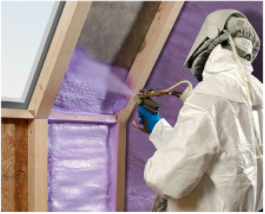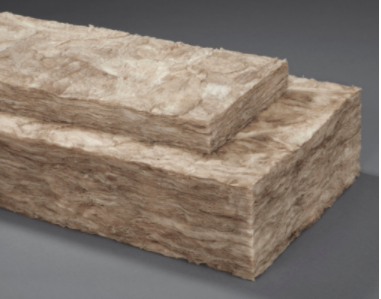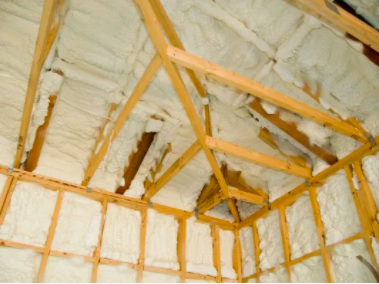If you’ve ever been in an empty container in the hot weather, it gets quite uncomfortable. The metal container turns into a large hot box. It can get so hot that you might be standing in 99 degree to about 123 degree heat. I don’t know about you but that’s not my idea of a living space that’s comfortable to live in.
Luckily, most counties have zoning regulations and building codes that offer guidelines for a container home. An inspector also would need to approve the container home to make sure that the living conditions it offers are within the counties building codes.
So what kind of methods can be used to help properly make a container home into a comfortable living space instead of a hot box?
Here are a few methods that can be used to aide with this process.
Polystyrene Insulation

One good method to keep a container home from getting too hot is having it insulated. There are different materials and methods used for this.
For example one popular method is using polystyrene spray foam or polystyrene insulation boards.
The option of the spray has been found to have some health hazard properties so the board method is a lot safer.
Fiberglass Insulation
Fiberglass board insulation has been found to be conventional in homes and can also be used in a container home.
Although it may be great for insulation for homes, it is a little different for a container home because the boards would sit in the grooves of the container.
So this might not be the best insulation for a container home because the end result would be gaps.

Rock Wool Insulation
Rock wool insulation boards also work well for homes and can also be used for a container home, but since it’s in a board form, it can cause the same issue as Fiberglass insulation boards. There would be a gap between the insulation boards because of the corrugated container walls.
The up side of using this type of insulation is that it’s very cost effective.
Closed Cell Spray Foam Insulation
Closed cell spray foam insulation is very high in insulation value. It’s sprayed on all surfaces of the container, even on the 16-inch studs and leaves no gaps.
It also is very effective at air leakage to keep your container home cool. It keeps moisture and condensation from developing between the container walls and foam.
That means there is a lesser chance of having mold grow.
There is a down side to using this type of insulation, it contains Hydro-chlorofluorocarbons or for short HCFC’s, which are hazardous to the environment.
This material is also very costly.
Open Cell Spray Foam Insulation
Open cell spray foam insulation isn’t very common as only one company manufactures it. Open cell spray is also a very high value insulation material used for insulation as it can also be sprayed to seal any gaps between the studs used for wall support.
In fact, open cell spray foam expands a lot making it easier to fill hard to reach gaps.
The down side to open cell spray foam is that it doesn’t do very well in extreme weather conditions.
It does help with insulation but for those places that get too hot, this might not be the right option since it does not work as well in extreme heat.

Eco Friendly Insulation Material
A couple of Eco friendly materials that can be used to insulate your container home are wool, cotton, recycled denim, straw, cork and recycled newspaper. These may cost less to install initially but since these materials are biodegradable, you may want to treat these materials to have a longer life span.
Insert Image
Modify Your Container Home
There are also other ways to regulate temperature in your container home. One way is to add more windows. When it gets hot, you can open the windows to get a nice breeze and let the hot air out.
Ductless System AKA Mini-Split System

A ductless system is a unit that brings in air from the outside and converts it to either cool or hot air depending on what setting you’ve chosen.
This is a very cost effective option, it also has it’s own filtration system. They are easy to install and leave a small carbon footprint.
A ductless system uses refrigerant called R410A that has no ozone affect. This is a great option.
Replace The Roof
You can also have the top of the container removed and replaced with wood roofing. This will help to dissipate heat rather than be a conduit for heat.
Have Large Glass Doors
You can also make glass sliding doors to open when there’s a hot day. If the doors are facing the wind, you can let the wind in to keep cool. It will also light up your home very well.
Shades
Light colored or white shades on windows can help to reflect heat. That way you can still get natural light into your container home.
Change Light Bulbs
You can also use light bulbs that don’t emit a lot of heat to keep the temperature down.
Incandescent lights give off a lot of heat so swapping them out for fluorescent lights will help to reduce the heat.

Box Fans

Box fans are another good alternative to help keep a container home cool when it’s hot. Placement is key.
A box fan placed in the north, facing winds can pull in the cool winds and one placed in the south, can push out the heat out of the container.
So the fans will work by pulling in cool air and pushing the hot air out helping to keep the temperature regulated.
Shade From Trees
When looking for a location, mature trees would be a perfect way of getting shade. Trees can help block out much of the sun’s heat. If your area does not have mature trees, see if you have space to grow them. Visit a nursery or start them on your own. Not only will it add curb appeal but shade for those hot days.


Plants in Your Home
Plants aren’t usually looked at as temperature regulators but here are a few plants that can help regulate your room temperature:
- Ficus Benjamina can help to keep the indoors cool and moist.
- Ficus Elastica (Rubber Plant) also helps to keep the indoors cool and moist.
- Chinese Evergreen (Aglaonema) helps to filter toxins and humidify the air.
- Palms are good at taking in a lot of CO2 and releasing oxygen. The more CO2, the more return oxygen you’ll get.
- Mother-in-law’s Tongue gives off cool evaporating moisture and oxygen.
There are many options in keeping your container home cool. Take your pick.


